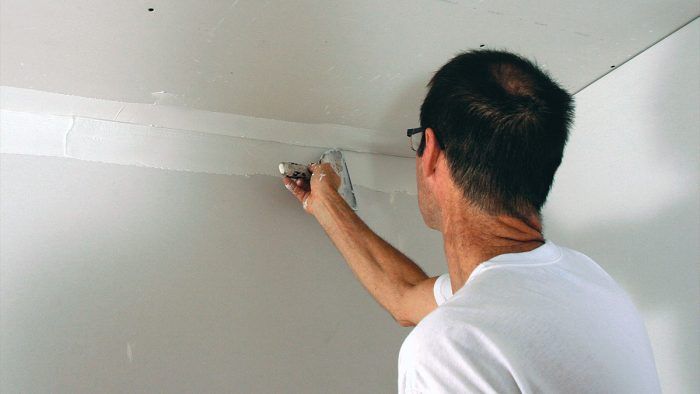Taping and Finishing Drywall Corners
The trick is to work on half of a corner at a time.

When taping and finishing drywall, people seem to struggle most with inside corners. The temptation is to try to work on both sides of a corner at once. If you do that, while you are working one side, the edge of the taping knife or the wet drywall compound (mud) that can build up on its edge will mess up the mud on the other side. It can lead to an even bigger mess at the point where the wall meets the ceiling and three corners come together.
There is a trick to it, but before tackling the corners, tape the flats. Then bed the tape in all three corners (two ceiling and one wall), finish-coat one side of each, let dry, and finish-coat the other sides. You can generally do half of a corner one day, and the other half the next. In humid conditions, it can take longer for the mud to dry.
The drying time can be problematic on small jobs that you could otherwise finish in a day. To speed things up, use setting compound instead of regular drywall mud from a bucket. Setting compound, which comes as a powder that you mix with water, is available in several formulations that harden in times ranging from 20 to 90 minutes. Setting compound might not be worth the time and expense on a larger job that will take multiple days anyway, but it can let you finish a small job in time for supper.
Embed the tape

Finish-coat one side
Finish-coat the next side
Choose the right taping knife
Stiffer knives do a better job of removing excess mud and of creating a smooth surface than more flexible knives. Unlike with flat joints, where a variety of taping-knife widths are called for, when taping corners, one 6-in. knife is all that you need.
Photos by Andy Engel











